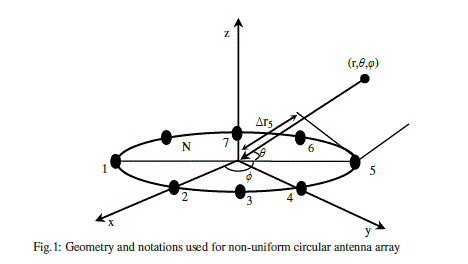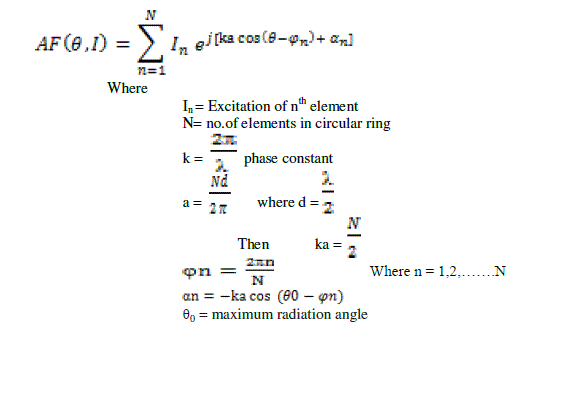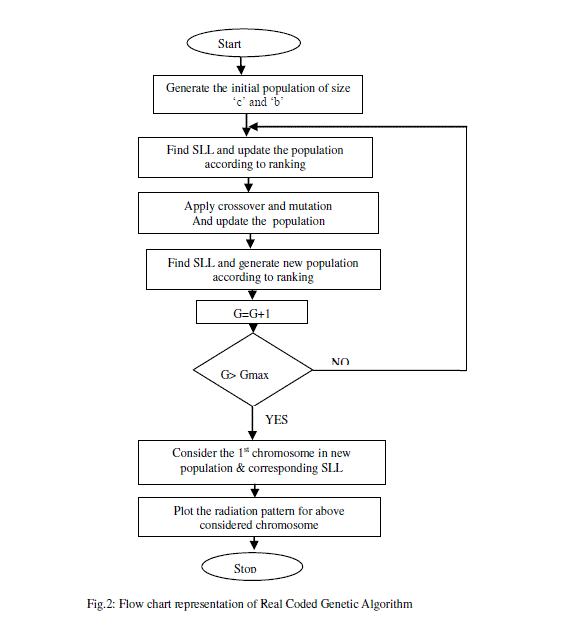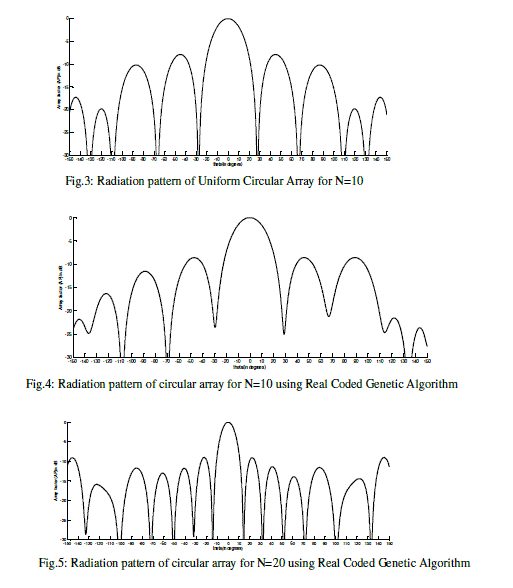ISSN ONLINE(2278-8875) PRINT (2320-3765)
ISSN ONLINE(2278-8875) PRINT (2320-3765)
M.Nirmala, Dr.K.Murali Krishna
|
| Related article at Pubmed, Scholar Google |
Visit for more related articles at International Journal of Advanced Research in Electrical, Electronics and Instrumentation Engineering
The purpose of this paper is to design of non-uniform circular antenna arrays for maximal side lobe level reduction. The antenna array design problem consists of finding weights that provide a radiation pattern with maximal side lobe level reduction. Real Coded Genetic Algorithm (RCGA) are very appropriate tools to search for the best antenna models. The effectiveness of Real Coded Genetic Algorithm (RCGA) for the design of non-uniform circular arrays is shown by means of experimental results. Experimental results reveal that design of non-uniform circular antenna array provides a considerable side lobe level reduction with respect to the uniform case.
Keywords |
| Side lobe level, Array factor, Genetic algorithm, Circular antenna array |
I. INTRODUCTION |
| The design of circular antenna arrays [1] finds application in areas as mobile and wireless communications systems. Generally speaking, the problem of designing antenna arrays is characterized by different and conflicting requirements (beam width, side lobe level, directivity, noise sensitivity, robustness) to be satisfied. In this paper a design criterion is considered to evaluate the performance of circular array for minimum side lobe level [2]. |
| Real Coded Genetic Algorithm (RCGA) technique [3] [4] [8] has been fairly successful at designing linear antenna arrays. However, array configurations in which the elements are placed in a circular ring are of great interest. They have applications in radio direction finding, air and space navigation, radar, and other systems. A real Coded Genetic Algorithm (RCGA) technique is applied to design of non-uniform circular antenna arrays. The method of Real Coded Genetic Algorithm (RCGA) is used to determine an optimum a set of weights that provide a radiation pattern with maximal side lobe level reduction. |
II. ANTENNA DESIGN |
| A. Problem Statement |
| Design of a Non Uniform circular array that provide a radiation pattern with maximal side lobe level reduction. Real Coded Genetic Algorithm is applied to design of Non-Uniform circular antenna arrays [6]. The method of Real Coded Genetic Algorithm is used to determine an optimum a set of amplitude excitation weights to provide a radiation pattern with maximal side lobe level reduction. Initially Uniform circular radiation pattern [5] is generated for number of elements N=10 and the sidelobe level for that is calculated. |
| Design a Non-Uniform circular for N=10 and 20 with maximum SLL for different set of amplitudes. These different set of element amplitude excitations are generated by using Real Coded Genetic Algorithm [7]. |
 |
| B. Array Factor Analysis |
| Consider a circular antenna array of N antenna elements uniformly spaced with a distance ‘d’ on a circle of radius a in the x–y plane as shown in below figure 1. If the N elements in the circular antenna array are taken to be isotropic sources, the radiation pattern of this array can be described by its array factor. Let the objective function is sidelobe level. The array factor for the circular array in the x–y plane in figure 1 is given by |
 |
| C. Flowchart |
 |
| The computed amplitude excitation coefficients, corresponding Sidelobe Levels and Beamwidths are presented in |
 |
III. RESULTS |
| A uniform circular array is considered and its field pattern is computed numerically and represented in figure 3.For N=10 and 20 the amplitude excitation coefficients are synthesized by using Real Coded Genetic Algorithm. By using the amplitude excitation coefficients, non uniform circular array patterns are numerically computed and their respective Radiation patterns are presented in figure 4 and figure 5. |
 |
IV. CONCLUSION |
| The paper presents the design of non-uniform circular antenna arrays to generate a radiation pattern with maximal side lobe level reduction. Experimental results reveal that design of non-uniform circular antenna arrays using the method of Real Coded Genetic Algorithm (RCGA) provides a considerable side lobe level reduction with respect to the uniform case. It is evident from results, that sidelobe level (SLL) and Beamwidths are reduced with increase of the number of elements in array. |
References |
|